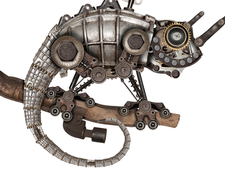Getting Started
Open Hardware – Arduino

© Lead Image © Burmakin Andrey, 123RF.com
Whether you are building your own device or customizing one, Arduino technology often functions as the foundation for your open hardware project. Here's how to get started with Arduino products.
Arduino single-board microcontrollers [1] were originally intended for educational and do-it-yourself projects. Increasingly, though, they are a foundation for Internet of Things (IoT) projects and open hardware. Sometimes, they are used only for prototyping, but, just as often today, they are found in commercial products ranging from keyboards to prosthetics. If you are involved in open hardware, knowing how to work with Arduino products is quickly becoming essential.
Arduino boards are influential for several reasons. To start, while limited in scope, Arduino boards are powerful enough for many dedicated purposes. If they are not, chaining them or using extension hardware known as shields can easily extend their usability. Just as importantly, Arduino boards can interact with Linux, OS X, or Windows, as well as other single-board microcontrollers like the Raspberry Pi.
Moreover, Arduino offers widespread support for all user levels. This support includes its own IDE and a programming language that is a variant of C, a Creative Commons license, and a community of thousands. With this support, users can begin to work without experience in electronics or programming. At the same time, Arduino is flexible enough to meet the needs of experts as well.
[...]
Buy this article as PDF
(incl. VAT)
Buy Linux Magazine
Subscribe to our Linux Newsletters
Find Linux and Open Source Jobs
Subscribe to our ADMIN Newsletters
Support Our Work
Linux Magazine content is made possible with support from readers like you. Please consider contributing when you’ve found an article to be beneficial.

News
-
Two New Distros Adopt Enlightenment
MX Moksha and AV Linux 25 join ranks with Bodhi Linux and embrace the Enlightenment desktop.
-
Solus Linux 4.8 Removes Python 2
Solus Linux 4.8 has been released with the latest Linux kernel, updated desktops, and a key removal.
-
Zorin OS 18 Hits over a Million Downloads
If you doubt Linux isn't gaining popularity, you only have to look at Zorin OS's download numbers.
-
TUXEDO Computers Scraps Snapdragon X1E-Based Laptop
Due to issues with a Snapdragon CPU, TUXEDO Computers has cancelled its plans to release a laptop based on this elite hardware.
-
Debian Unleashes Debian Libre Live
Debian Libre Live keeps your machine free of proprietary software.
-
Valve Announces Pending Release of Steam Machine
Shout it to the heavens: Steam Machine, powered by Linux, is set to arrive in 2026.
-
Happy Birthday, ADMIN Magazine!
ADMIN is celebrating its 15th anniversary with issue #90.
-
Another Linux Malware Discovered
Russian hackers use Hyper-V to hide malware within Linux virtual machines.
-
TUXEDO Computers Announces a New InfinityBook
TUXEDO Computers is at it again with a new InfinityBook that will meet your professional and gaming needs.
-
SUSE Dives into the Agentic AI Pool
SUSE becomes the first open source company to adopt agentic AI with SUSE Enterprise Linux 16.

